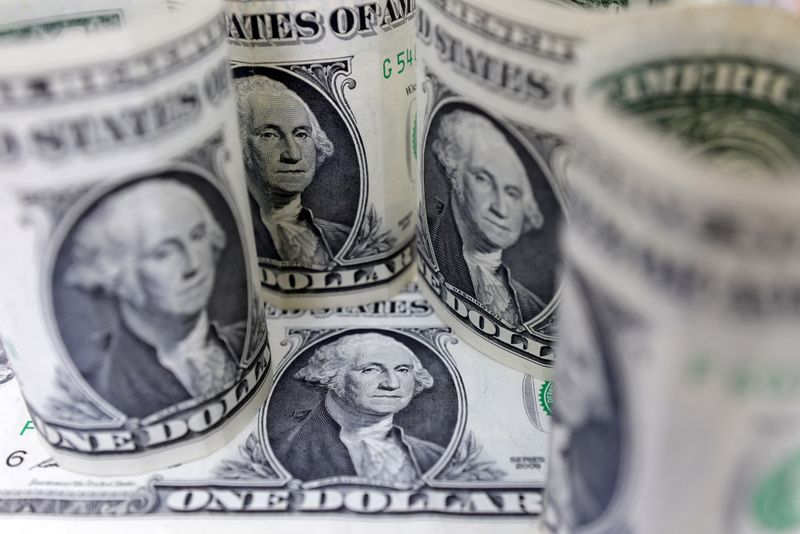By Kevin Buckland
TOKYO (Reuters) – The dollar started Tuesday on the defensive as traders squared positions on the day of the U.S. presidential election, after recent polls dented some of the market bets on a victory for Republican Donald Trump.
Democrat Kamala Harris has also experienced improving odds on election gambling sites and has a slight lead on PredictIt, although Polymarket continues to show Trump as favourite.
The U.S. currency slumped as much as 0.76% against the euro overnight to a three-week trough after a weekend opinion poll showed Harris with a surprise lead in Iowa, a traditional Republican stronghold. Overall, however, polls continue to show a tight race.
Meanwhile, the Australian dollar hovered not far from a nearly three-month low, with the Reserve Bank of Australia widely expected to hold policy steady later in the day. The main focus for traders though will be on any hints on the timing of an interest rate cut.
Financial markets in recent weeks had leaned strongly in favour of a win for Trump – whose tariff and immigration policies are considered inflationary by analysts – amid a climb in odds on some betting platforms.
The dollar index, which measures the currency against six major peers including the euro, was flat at 103.92 as of 0033 GMT, after slumping as low as 103.67 on Monday for the first time since Oct. 21. Last week it surged to the highest since the end of July at 104.63.
The euro was little changed at $1.0873, after lifting to $1.09145 in the previous session for the first time since Oct. 15.
Against the yen, the dollar traded at 152.325, after slipping to 151.54 overnight, a one-week low.
“We judge financial markets are now positioned for a Harris win,” said Carol Kong, a currency strategist at Commonwealth Bank of Australia (OTC:CMWAY).
“The USD can therefore fall modestly by 1%‑2% this week if Vice President Harris wins and lift materially if (former) President Trump wins,” she said. “Any delays and/or disputes over vote counting can also add to currency volatility this week.”
The winner may not be known for days after Tuesday’s vote, though Trump has already signaled that he will attempt to fight any defeat, as he did in 2020.
One-week implied volatility options for euro/dollar rose to the highest since March 2023.
Those same options for the offshore yuan against the greenback hovered close to Monday’s record high, while those on the dollar-Mexican peso pair were at the highest since April 2020. Analysts and traders speculate China and Mexico would be among the hardest hits by any protectionist Trump policies.
Leading cryptocurrency Bitcoin added 1.4% to $67,992, after dipping to a one-week low of $66,776.19 overnight.
Trump is viewed by analysts as enacting more favorable policies for cryptocurrencies than Harris.
“While your guess is as good as ours about who will win, we’re confident about the scenarios (we) laid out recently: In short, a Trump win or Red wave are bullish for the USD; a Blue Wave will crater the USD,” analysts at TD Securities said in a note. “Somewhere in the middle lies a Harris victory.”
“We don’t think Harris is necessarily bad for the USD over the medium term,” they said. “Harris simply shifts the focus back to macro, while Trump reshapes the market narrative around politics.”
On Thursday, the Federal Reserve is expected to cut rates by 25 basis points. Markets will focus on any clues that the U.S. central bank could skip a cut in December, after last week’s monthly jobs report showed employers added far fewer jobs than economists had expected in October, raising questions over the degree of softness in the labour market.
Also on Thursday, the Bank of England is expected to cut rates by 25 basis points, while the Riksbank is seen easing by 50 basis points, and the Norges Bank is set to stay on hold.
In Australia, investors will be sensitive to any tweaks to the RBA’s statement – due at 0330 GMT – particularly on policy needing to be “sufficiently restrictive”, and not “ruling anything in or out” on rates.
The Australian dollar edged down to $0.6582, languishing close to last week’s low of $0.6537, the weakest since Aug. 8.

